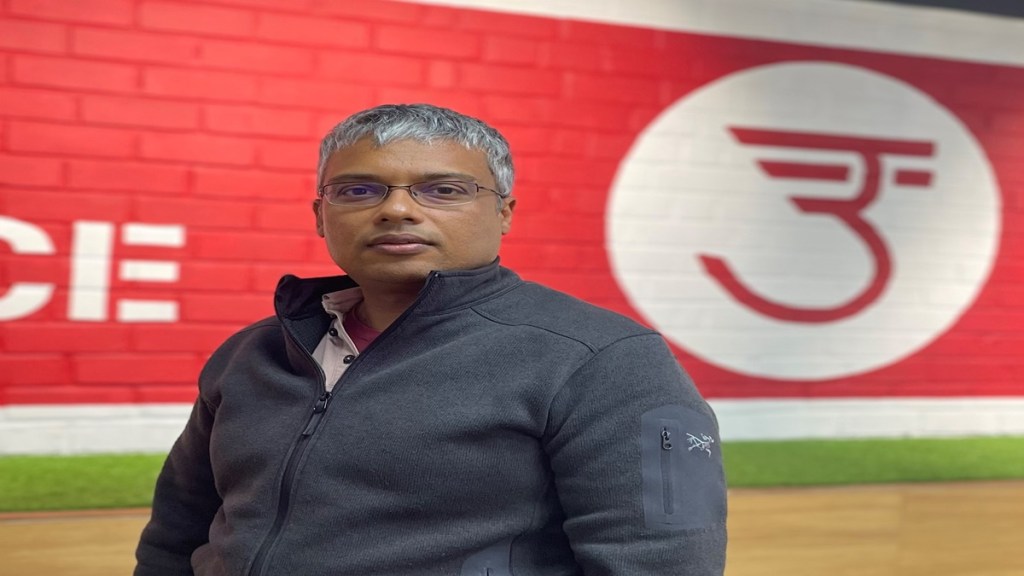Since taking over as CEO of Udaan in September 2021, Vaibhav Gupta has steered the company through a series of strategic pivots focused on cost efficiency, customer retention, and category expansion. In an interview with S Shanthi, Gupta explains how the firm’s consistent 40–45% annual growth and steady progress towards profitability have laid the foundation for an IPO in 18–24 months. Excerpts:
What prompted the ShopKirana acquisition, and how does it align with your broader plan?
Over the past few years, we have pursued a clear strategy to build a sustainable, scalable, and profitable business. We have grown over 60% annually and improved Ebitda by 40%. All 40+ cities we operate in are growing 40–70% and are unit economics positive. Retention and wallet share are at record levels. Our supply chain costs have dropped from 10–12% to 3.5%, which reflects in our burn. ShopKirana aligns perfectly as it brings deep FMCG focus, strong teams, and geographic complementarity, helping us accelerate both growth and profitability.
Will you pursue more acquisitions ahead of the IPO?
We are open to opportunities that align with our strategy. Now that we have fixed unit economics and margins, the next phase is quality scale. Any acquisition must accelerate our profitability and IPO plans, but we will remain selective.
How are you deploying the $114 million raised in your Series G round? Will there be another pre-IPO round?
We are investing in core areas like expanding presence, customer acquisition, wallet share, and category growth, especially FMCG, Horeca (hotels, restaurants, and cafes), and private labels. Tech and GenAI are key investment areas, helping cut costs and speed up product development. Structurally, this round was envisioned as our pre-IPO raise. We are well-positioned but will continue to monitor the market.
You have mentioned a clear path to profitability. What changed over the past two to three years?
Two things: customer focus and cost focus. We shifted to a micro-market approach, targeting specific clusters of say 200 stores in one part of a city, and ensured high service levels, the right assortment, and appropriate credit. This helped grow daily buyers by 60% and monthly buyers by 30% over 12–18 months. On cost, we redesigned our supply chain, reducing costs from 10% to 3.5%, aiming for 3%. We slashed fixed costs by 90% by rethinking our organisation structure.
How has the private label business performed and what’s next?
Private labels now contribute nearly 15% of total business and 25% of our staples segment, a jump from under 2%. These products deliver 2x the gross margins of market brands and drive stronger stickiness through consistent quality. We expect private labels to form 40% of staples and nearly one-third of overall business within 12 months. In parts of Bengaluru, they already account for 40–45% of staples sales.
Which categories and geographies are you targeting for private label expansion?
We are expanding private labels pan-India across our top 25 cities. In staples, we are already present in rice, pulses, flour, and oil, and are now entering consumer packs. We are also entering detergent and cleaner segments in FMCG. In Horeca, private labels cover staples and general merchandise. ShopKirana’s private label assets will now be integrated into one unit, boosting speed and scale.
FY24 revenues were around Rs 5,700 crore with losses narrowing 19%. What are your targets ahead?
We have maintained 40–45% monthly growth for nearly two years, translating to 55–60% annual growth. We aim to sustain 45% YoY growth for the next 2–3 years, driven by category and geographic expansion. High-margin verticals like FMCG, Horeca, and private labels will increase their share steadily.
Has quick commerce impacted your business?
Not at all. If anything, it’s validated the resilience of kiranas, who serve masses with low ticket sizes. Quick commerce models don’t scale at those margins. Their fulfillment cost per order is Rs 130–140, which doesn’t work at Rs 10–20 margins. Meanwhile, in Bengaluru, we grew 45% in the last year, with daily buyers up 60%, monthly buyers 30%, and wallet share up 25%.
What are your plans for the rest of this fiscal?
Our strategy remains unchanged, that is deepen presence in key markets, expand FMCG, Horeca, and private labels, and maintain cost discipline. Post-ShopKirana, we have added new cities, taking our total to 25 key markets. We will stay focused on these.
When do you plan to go public?
Our IPO is targeted in 18–24 months. Markets value large, organised distribution businesses. D-Mart, Trent, Asian Paints are good examples. We have merged our entities into one India-focused unit and are the largest player in the country’s biggest market segment. With steady 35–40% YoY growth and a clear path to profitability, we believe the timing and fundamentals are right.
